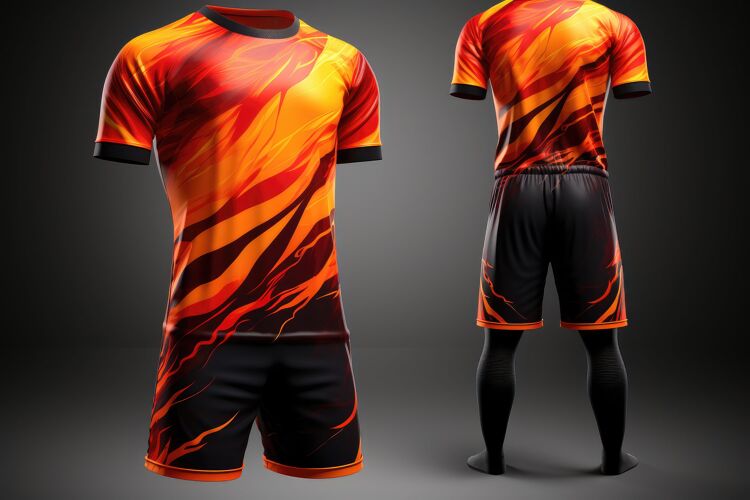New fibres and materials influencing the future of sustainable printed Sportswear

Debbie McKeegan discuesses how the landscape of sportswear is drastically changing. With sportswear manufacturers focusing on using recycled and new fibres in their production.
The landscape of sportswear is changing dramatically as the decade progresses. With a heightened focus on sustainability, manufacturers have turned their attention to the use of recycled and new fibre materials to influence production. This uplift is demonstrated further by the statistics with the global fibre market projected to hit an astounding $1.1 trillion by 2030, with recycled fibres playing a significant role (Source: Textile Exchange).
What's driving this paradigm shift?
There are a few factors. Firstly, consumer awareness of fashion's environmental impact has spiked, leading to demands for more sustainable products. On the institutional level, governments have been implementing policies promoting recycled material use, such as bans on single-use plastics and producer responsibility schemes. Additionally, the cost of recycled materials has significantly decreased, creating a competitive market with virgin materials. Lastly, technological advancements are enhancing the quality and performance of recycled materials significantly.
The sustainable fibre sector is burgeoning with innovation, with major brands leading the way. Inditex, for example, has collaborated with Ambercycle, an L.A based material science company, to help scale textile-to-textile polyester recycling. The partnership led to the creation of a sports collection consisting of up to 50% Cycora, an innovative material derived from post-industrial and post-consumer polyester waste.
As part of this initiative, Zara Athleticz, a sub-brand of sportswear for men, has launched a capsule collection featuring “technical pieces” containing up to 50% Cycora.
Simultaneously, global sports company PUMA has committed to replacing recycled polyester with its innovative RE:FIBRE technology. Since its pilot in 2022, RE:FIBRE has been used in the production of various kits, and the company plans to expand its usage to all official football club and federation replica jerseys by 2024. RE:FIBRE technology has also been used to create Switzerland and Morocco replica kits for the Women’s World Cup as well as Girona’s 2023/24 season Third kit.
Official PUMA football replica jerseys including those for the Euro and Copa América tournaments will be manufactured using RE:FIBRE recycled materials that were made of old garments and factory waste rather than only recycled plastic bottles.
Early in 2024, the Lenzing Group has introduced a new fossil-free processing technique for TENCEL™ lyocell fibres. The method produces stretch fabrics that not only enhance wearer comfort but also follow responsible production methods.
Eastman's Naia™ Renew cellulosic fibre has also raised the sustainability bar by receiving the Global Recycled Standard (GRS) certification, validating its ethical production. On the same wavelength, sportswear giant - Adidas ambitious strategy aims at sourcing 100% recycled polyester fibre and incorporating sustainability-centric technology in 90% of its products by 2025.
Beyond these efforts, the North Face brand recently partnered with a consortium led by the U.S. Department of Energy that researches bio-based synthetic textiles as potential new sustainable raw materials. Outdoor brand The North Face is actively involved in this quest, contributing to the development of innovative, eco-friendlier fabrics to replace conventional polyester.
The new wave of fabrics, however, comes with unique challenges, particularly in printing. With Reactive and Dye Sublimation printing systems accounting for 74% of sportswear printing (Source: Inkwood Research), the increased use of fibre blends and regenerated fibres calls for new printing methods.
Pigment and Acid printing systems are expanding to accommodate these challenges, with their respective strengths in fibre blends and regenerated nylon swimwear.
Printing systems like Dye Sublimation, Reactive, Acid, and Pigment each have their unique pros and cons. While Dye Sublimation offers high image quality and vibrant colour, it is limited to Polyester Fabrics. Reactive printing is energy and water-intensive but delivers excellent fastness results and colour vitality. Acid printing provides excellent colour and fastness results but is equally water and energy intensive.
Conversely, Pigment printing does not rely on chemical bonding with fabric fibres, making it more versatile and eco-friendly - yet weaker in wash fastness and rub fastness. As a result of this use of Pigment printing for sportswear is expanding, with annual growth in double digits as blended fabrics become more widely used in sportswear.
It is evident that the sportswear industry is on an upward trajectory, powered by advancements in fibres and inks. Regardless of the print process, the sector's growing popularity, fuelled by the rising trend in sports and athleisurewear, makes it a space to watch in the coming years. This shift is not only shaping the fashion industry but also influencing a more sustainable future for print with the adoption of both circular design and environmentally secure manufacturing technologies.
Discover the latest innovations in sportswear at Sportswear Pro 2024, taking place from 19th – 22nd March 2024. Sportswear Pro will showcase the very latest technologies and solutions for on-demand and customised sportswear production. From sample design and automated digital workflows, to innovative materials and integrated wearable technologies, the exhibition and visionary trend forum will present sustainable, faster and leaner production solutions to sports and activewear brands and manufacturers. Register here and use code SWPJ401.
Topics
Interested in joining our community?
Enquire today about joining your local FESPA Association or FESPA Direct
Recent news

The power of digital design tools in screen printing
James Gatica shares how the combination of traditional screen-printing techniques with cutting-edge digital design tools is revolutionising the way designers conceptualise and produce custom decorative pieces.

Key trends and market shifts on Personalisation and Sportswear with Epson
Debbie McKeegan speaks to Duncan Ferguson, VP of Commercial and Industrial Printing at Epson Europe about the market shifts and current trends around personalisation. Duncan shares the key trend of merging both fashion and sportswear.

